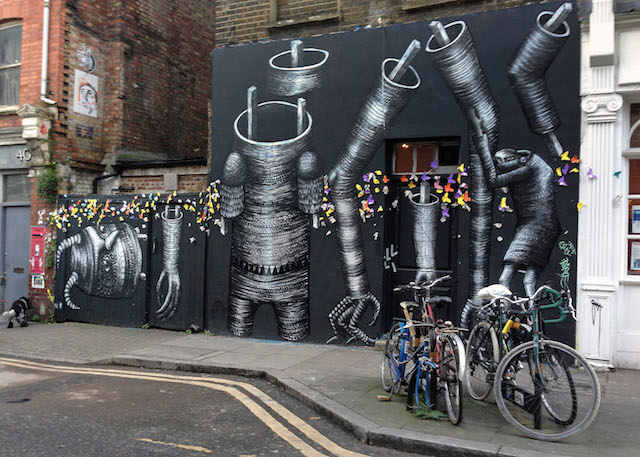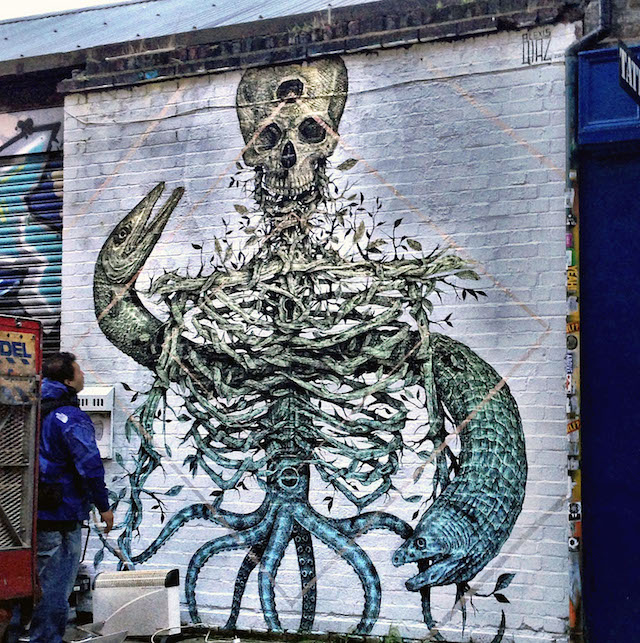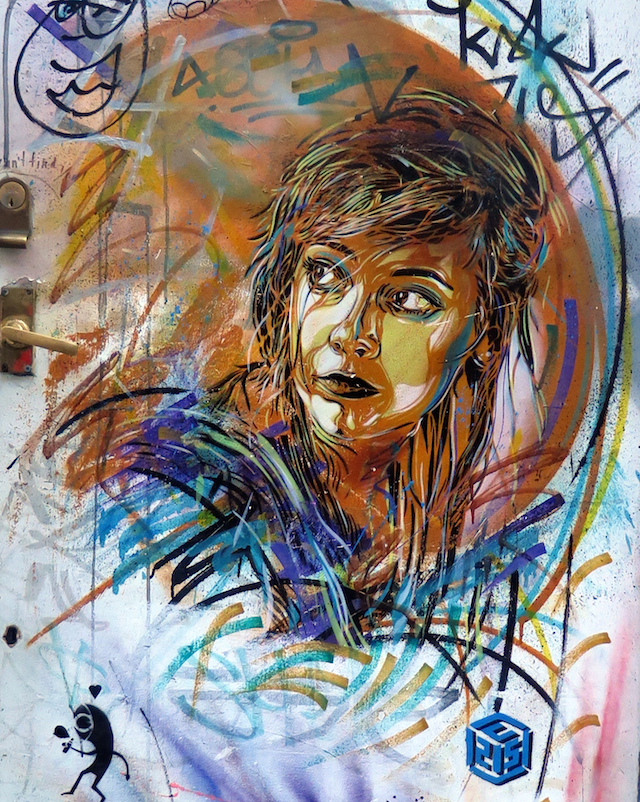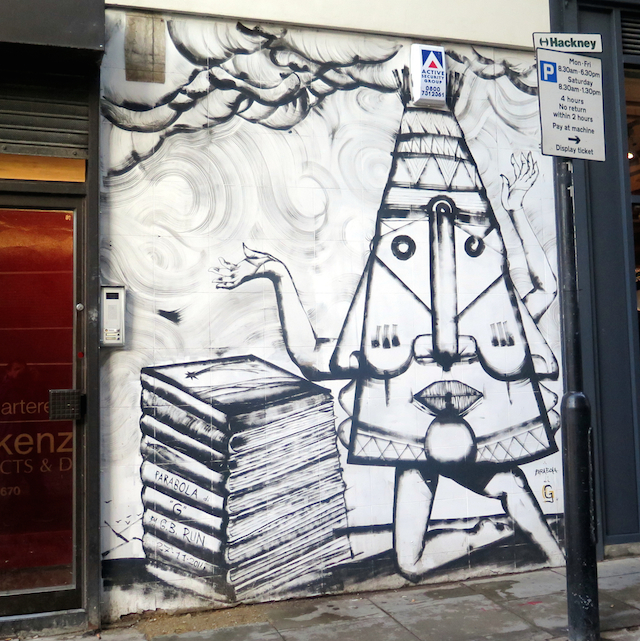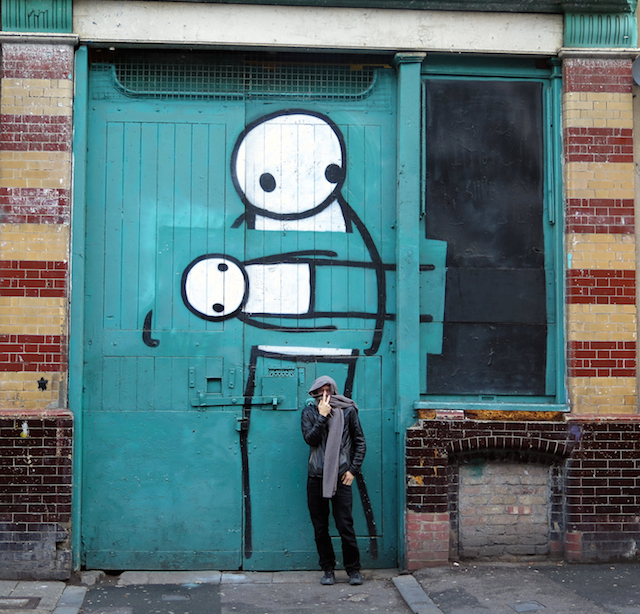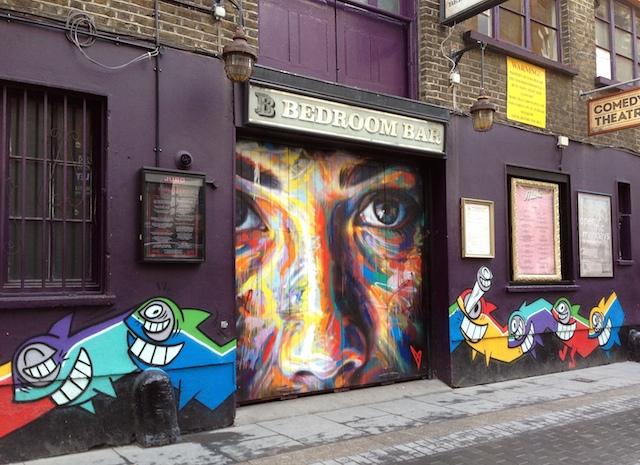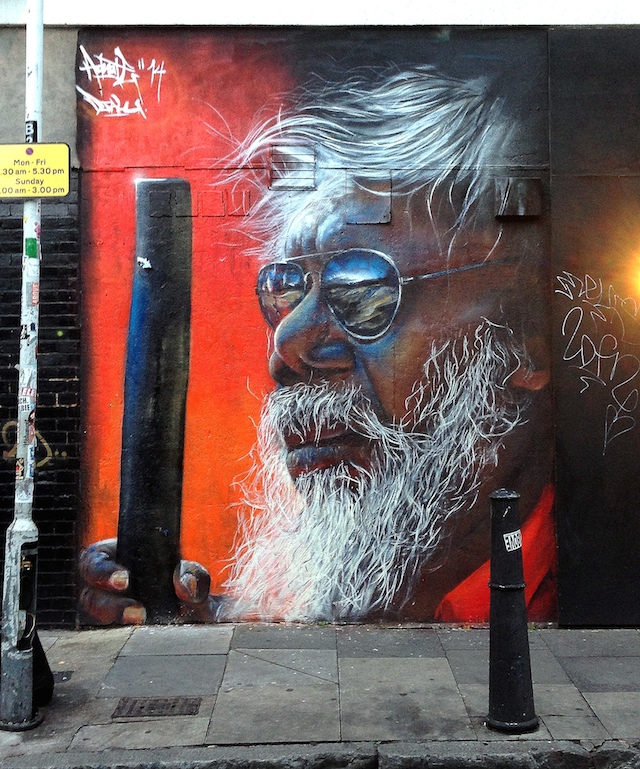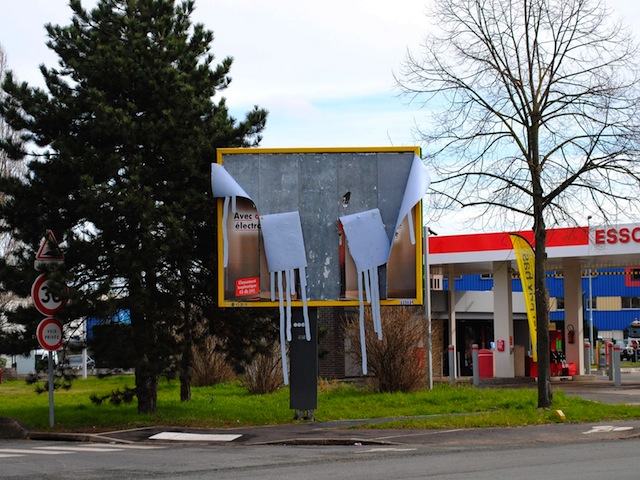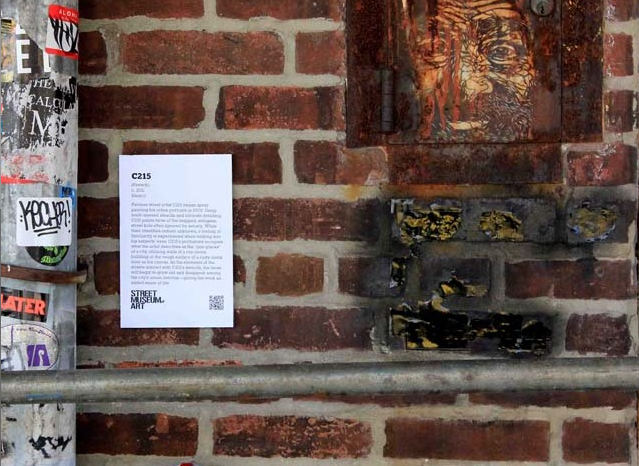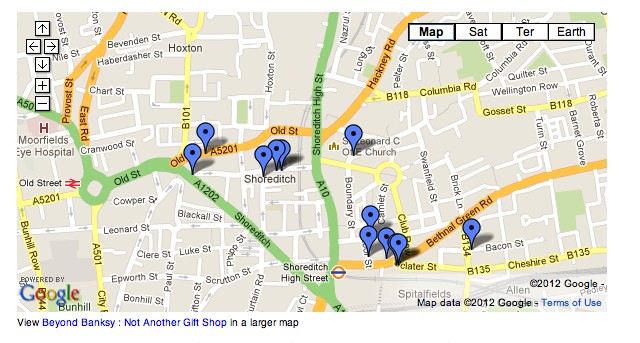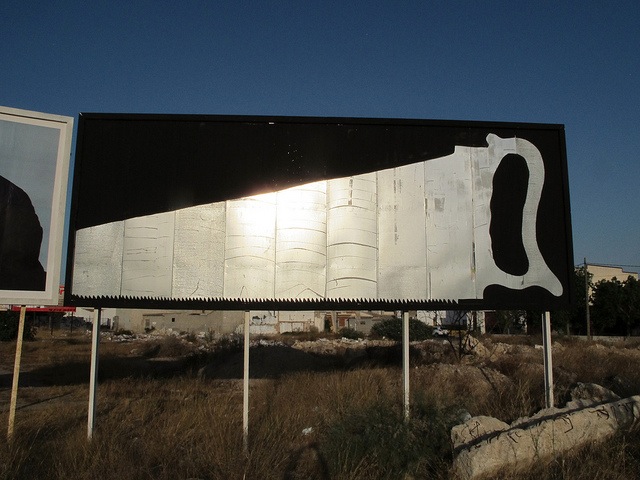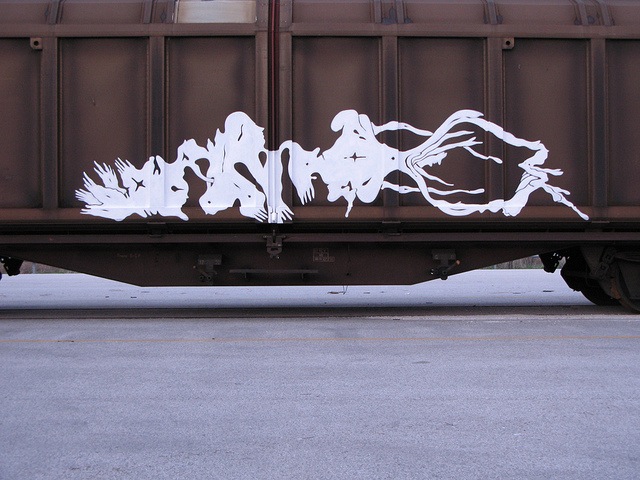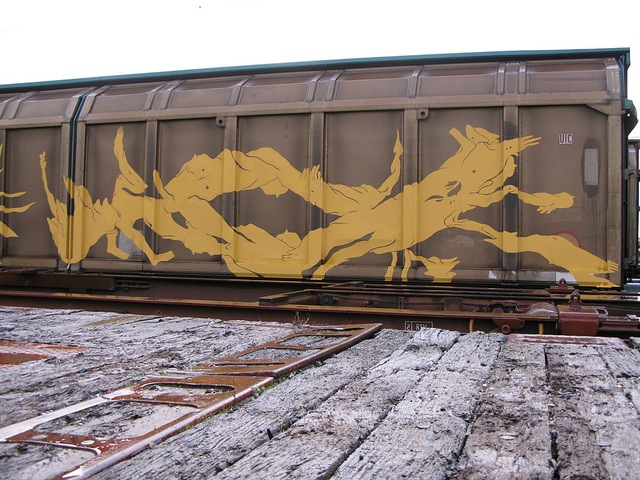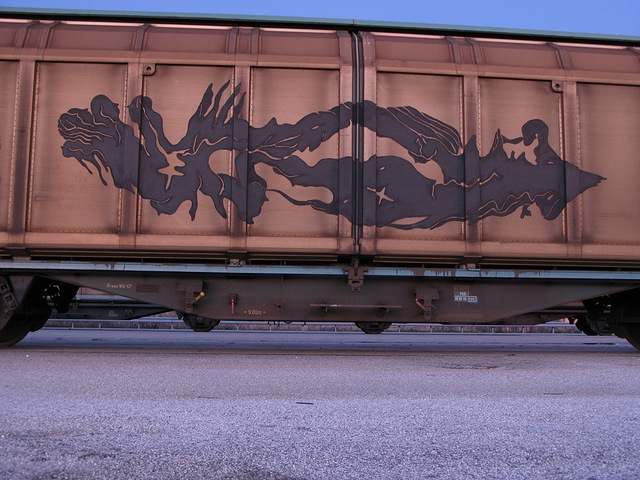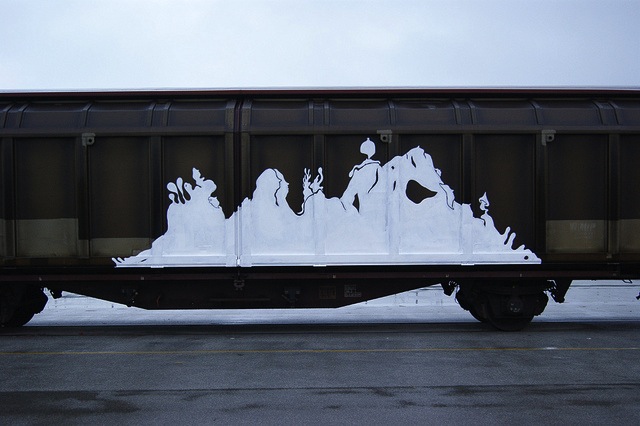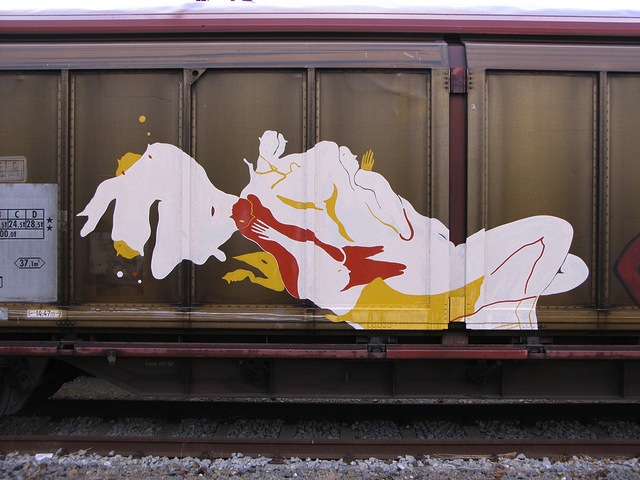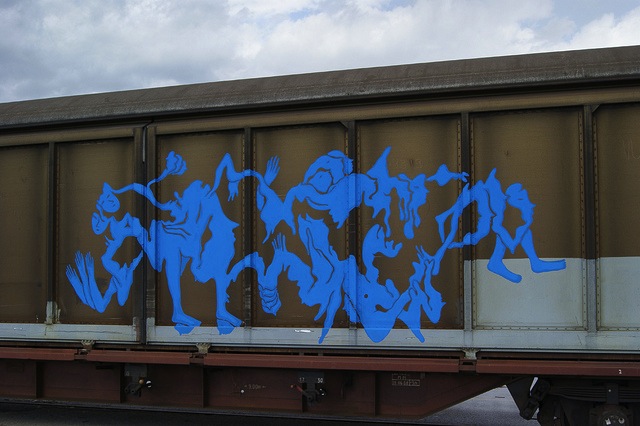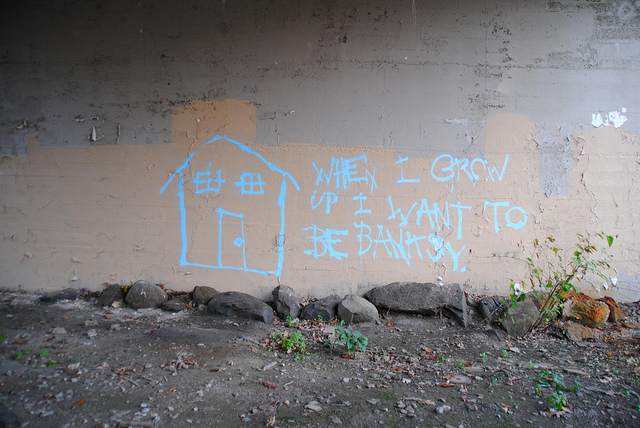
I’ve been a fan of Run‘s work for many years, but I’ve never met the man and never really knew much about him. All I knew were his men, creeping around the walls of Hackney and Shoreditch. Earlier this year, Tim Hans met up to Run for the latest in our continuing series of photo-portraits of artists by Tim, and I asked him a few questions over email.
RJ: Who are the people in your paintings? Anyone, or group, in particular?
Run: The people that I paint show an evolution of episodes and experiences. They are ‘nobody’, they are the portrait of ‘nobody’, they are not even a race (some people said that they have black features) but they have not, they are a template to demonstrate actions, feelings and thought. Sometimes they have a totally blank expression, but others are completely awake and aware. I guess that on the deepest level any artist tries to reproduce him or herself; we are just trying to survive and perpetuate ourselves in order to not disappear. Where I cannot go, or where I cannot reach, “the people of my paintings” can.

RJ: What do you look for when choosing a wall to paint?
Run: The urban environment is so diverse and exciting to look at that sometimes it doesn’t need any other information to be added to it. We should carefully consider whether to add a painting, it really is a delicate matter. Graffiti has such a strong and random statement, that for it to appear it doesn’t need to ask permission and it is totally beautiful and spontaneous. If you look at cities like Rome or Madrid, Buenos Aires or San Paulo, graffiti is everywhere and is not inscribed in any closed area. It is the skin of the city that changes constantly like a snake.
What I do is a bit different because it is not horizontal or vertical but expands with the shape of the building, squashing the architecture around the drawing. I can’t always ‘choose’ a wall but I guess that when I can, I go for the wall that gives me the most options for creating what I want. Also I go for a wall that gives me the chance to be organic with the city and with the architecture/habitants/anthropology of the area. Other reasons for choosing a wall are more basic – I look for a smooth, comfortable, high up, wide, visible wall an possibly facing south.
RJ: You do a fair bit of traveling. What have been your favorite places to visit?
Run: Traveling it will never be enough. West Africa has been my latest destination and is probably now on the top of my list of places to go back to. It was a self organised and planned trip and I had the backing of a few amazing people (two above all, WideOpenWalls (Gambia) and Yattal Art (Senegal in Dakar)). I moved through the countries by land (and boats), to have a closer view of the culture and nature. People over there don’t care about ‘street art’ or who you are as an artist, but the person that you are.
The most astonishing places to visit for me were where the nature is virtually untouched and where really there’s nothing to paint.
Other than that I try to concentrate on organising my trips, and luckily I’m getting better at that. Maybe now I feel that every trip is such a special opportunity, nothing should be underestimated or taken for granted.

RJ: What is your goal with your art?
Run: Control my time. Inspire people and get inspired. Keep my rebellion always consciously aware and exercised.
RJ: Can you explain your recent fascination with phones? Seems like a completely different subject matter.
Run: When I was in Africa I wanted so many times to communicate with my friends overseas, but it was almost impossible. Sometimes there was no electricity or water, so imagine the internet or mobile phone networks!
Art is projecting magic into the world, so the phone-box was like a dimensional door, you know, it gave me confidence that someone was on the other side of the line ready to listen to me. It’s magic, it really works!
Yes, it makes more sense in a wild area with broken networks, but it’s funny and I like it, kids like it too and I bet adults do as well.
I remember the first couple of phone-boxes that I painted in villages in Africa, the kids called them ‘mobile’, of course, because they have never seen a public landline phone before. I like to keep this phone old fashioned, but I think that I will only paint phones for this year 2013 and then I will stop.

Photos by Tim Hans
